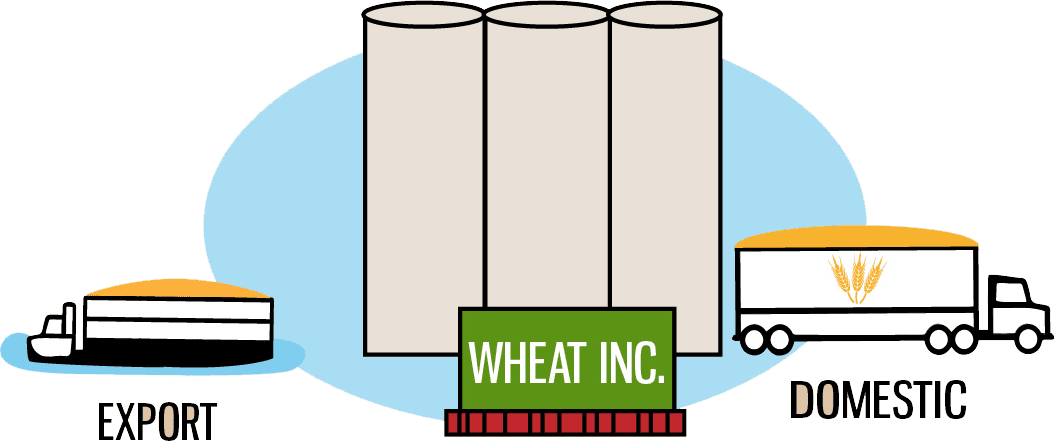Wheat goes through several steps on its journey from the field to your table.
You might also enjoy this Wheat: From Field to Table video.
Your Food's Journey from Farm to Table
Farmers spend time planting seeds, checking for disease and monitoring plant health until harvest. Combines harvest the wheat kernels, which are then loaded into a semi-truck.

The harvested grain is sold at market price to a local grain elevator. The elevator can store the grain until the right market price, or it can sell it.

Country elevators sell their grain to terminal elevators, which clean, separate and maintain the value of the grain. The grain is then sold to flour millers for domestic consumption, or it is loaded into ships bound for overseas markets.

The flour mills grind the grain into different types of flour — whole wheat, all-purpose, bread flour, etc. The mills can also use the flour to make ready-to-eat products. Both the flour and wheat products are shipped to grocery stores and other food retailers.

Bakers and chefs also use flour to make a wide variety of delicacies. Consumers can either buy these products, or buy flour produced by the flour mills to make their own creations at home.

Finally, wheat products make their way to your table. These products are essential to many holidays and celebrations and go through a safe process to get to you. Whenever you open that next package of hamburger buns for a weekend cookout, think of a wheat farmer and all of those in between.

Content provided by Texas Wheat. Download the full graphic.
Are you interested in learning more about the folks that grow your food? Check out the Knopf family in Central Kansas! Or would you like to know how to help your kiddos get the whole grains they need? Grab these great tips and tricks from our Registered Dietitian!